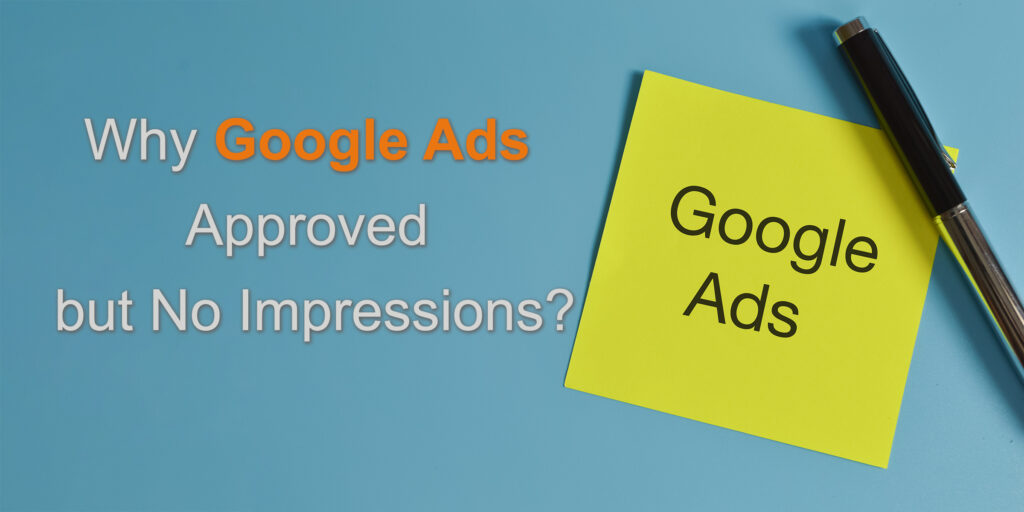Google Ads is a powerful platform for businesses looking to promote their products or services online. However, it can be frustrating when you create an ad campaign, get it approved, but then see little to no impressions. This situation can occur for various reasons, and understanding why it happens and how to fix it is crucial for the success of your advertising efforts. In this article, we will explore the common reasons behind Google Ads approved but no impressions and provide actionable solutions to help you get your campaigns back on track.
1. Budget Constraints
One of the most common reasons why your Google Ads may have been approved but are not getting any impressions is budget constraints. Google Ads operates on a bidding system, where advertisers compete for ad placements by bidding on keywords. If your daily budget is set too low for the keywords you are targeting, your ads may not get enough opportunities to be displayed.
Solution: Review your budget allocation. If you’re targeting competitive keywords, consider increasing your daily budget to ensure your ads have a better chance of being shown to your target audience. You can also adjust your bidding strategy to maximize your ad exposure within your budget.
2. Low Ad Rank
Ad rank is a critical factor in determining whether your ads will be displayed and their position on the search engine results page (SERP). Google uses a combination of your bid amount, ad quality, and ad relevance to calculate your ad rank. If your ad rank is low, your ads may not get impressions.
Solution: Improve your ad rank by optimizing your ad copy, landing page, and keywords. Make sure your ad copy is compelling and relevant to your target audience, and your landing page provides a seamless user experience. Additionally, consider increasing your bid to improve your ad rank.
3. Poor Quality Score
Google assigns a quality score to each keyword in your campaign, which is based on factors like click-through rate (CTR), ad relevance, and landing page experience. If your keywords have a low quality score, your ads may not be shown frequently, even if they are approved.
Solution: Work on improving the quality score of your keywords by creating highly relevant ad copy, using targeted keywords, and optimizing your landing pages. A higher quality score can lead to better ad placement and more impressions.
4. Ad Scheduling and Bid Adjustments
Ad scheduling and bid adjustments allow you to control when and where your ads are displayed. If you have set specific ad schedules or bid adjustments that restrict your ad’s visibility, it can result in approved ads with no impressions.
Solution: Review your ad scheduling and bid adjustments to ensure they are not limiting your ad’s reach. Consider expanding your ad schedule to cover different times of the day or days of the week when your target audience is most active.
5. Geographic Targeting
If you have set geographic targeting for your ads, they will only be shown to users in the specified locations. If your targeting is too narrow or if you are targeting an area with low search volume, it can lead to approved ads with no impressions.
Solution: Broaden your geographic targeting if your business can serve a larger area. Alternatively, if you are targeting a specific location, make sure your keywords and ad copy are relevant to the local audience to increase the chances of impressions.
6. Keyword Selection
The choice of keywords plays a crucial role in the success of your Google Ads campaign. If you have selected highly competitive or irrelevant keywords, your ads may struggle to get impressions.
Solution: Conduct thorough keyword research to identify relevant and less competitive keywords for your campaign. Use tools like Google’s Keyword Planner to find keywords with a reasonable search volume and bid on those to increase the chances of impressions.
7. Negative Keywords
Negative keywords are words or phrases that you specify to prevent your ads from showing when those terms are included in a user’s search query. If you have added too many negative keywords or if they are too restrictive, your ads may not get impressions.
Solution: Review your list of negative keywords and ensure they are not overly broad or restrictive. Remove any negative keywords that may be preventing your ads from reaching your target audience.
8. Low Ad Position
Even if your ads are getting some impressions, they may not be receiving as many as you’d like if they have a low ad position on the SERP. Users are more likely to click on ads that appear at the top of the search results.
Solution: Increase your bid or improve your ad quality to boost your ad’s position on the SERP. A higher ad position can lead to more impressions and clicks.

9. Ad Content Violations
Google has strict policies regarding the content and format of ads. If your ad violates any of these policies, it may be disapproved or receive limited impressions.
Solution: Review Google’s advertising policies and ensure that your ad content complies with them. Make any necessary adjustments to your ad copy or creative to meet the guidelines.
10. Seasonal or Niche Keywords
Some keywords may only have significant search volume during specific seasons or for niche markets. If your campaign is targeting keywords with limited demand, it can result in approved ads with no impressions during off-peak times.
Solution: Plan your advertising strategy around seasonal trends and market demand. Consider pausing campaigns for keywords that are not relevant or in demand during certain periods and allocate your budget to more relevant keywords.
Conclusion
While getting your Google Ads approved is a significant milestone, it’s only the first step in a successful advertising campaign. To avoid the frustration of having approved ads with no impressions, it’s crucial to address the potential issues mentioned in this article. By optimizing your budget, improving your ad quality, refining your keyword selection, and adjusting your targeting settings, you can increase the visibility of your ads and ultimately drive more traffic and conversions. Regular monitoring and optimization are key to ensuring your Google Ads campaigns continue to deliver results.
For more information, visit Bel Oak Marketing.





